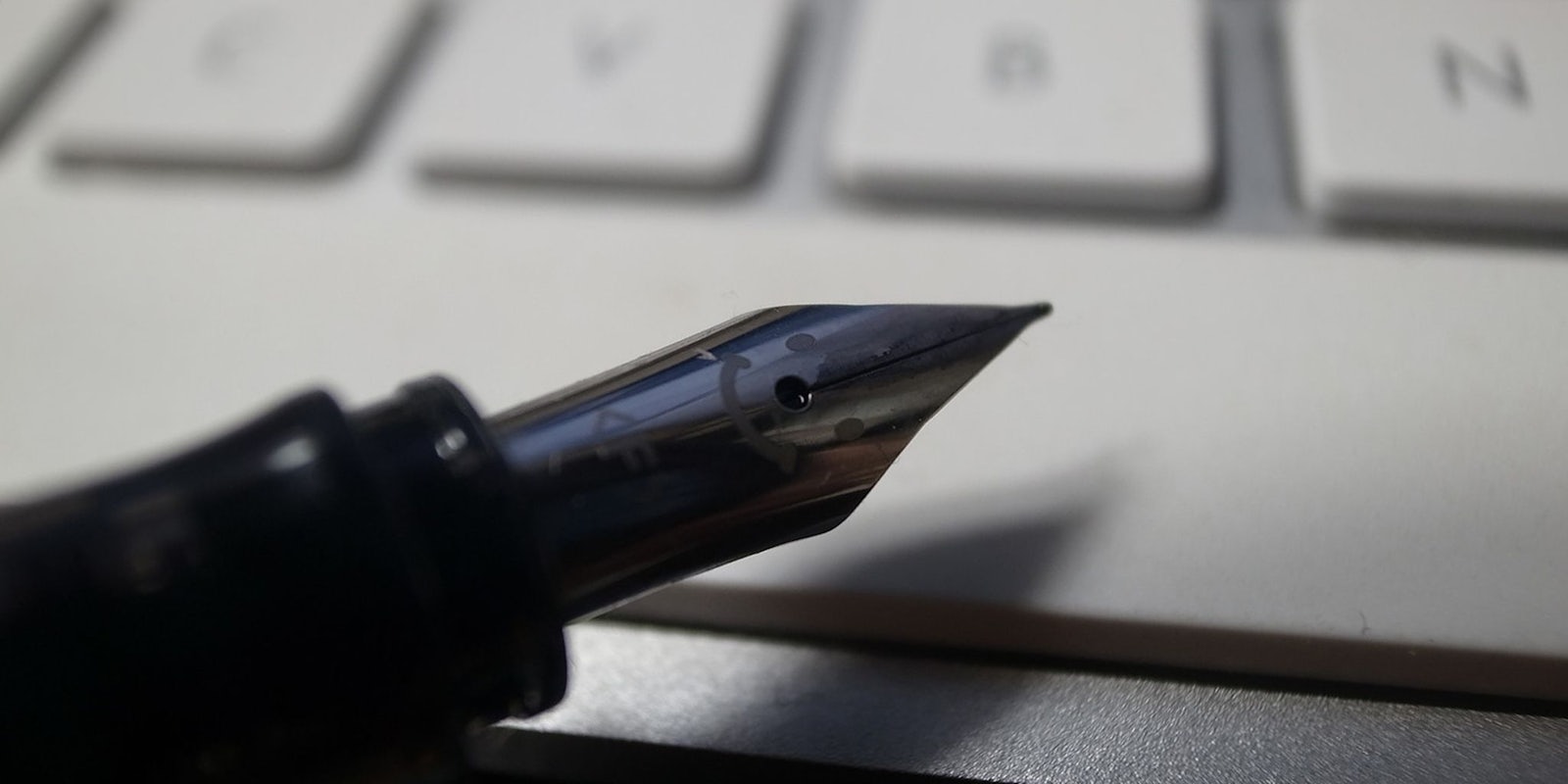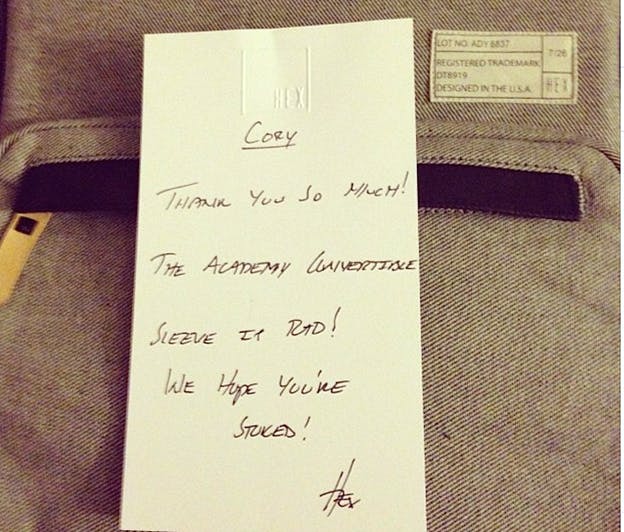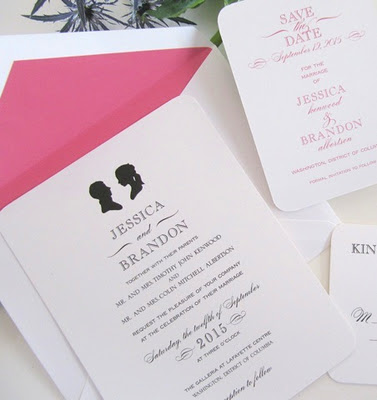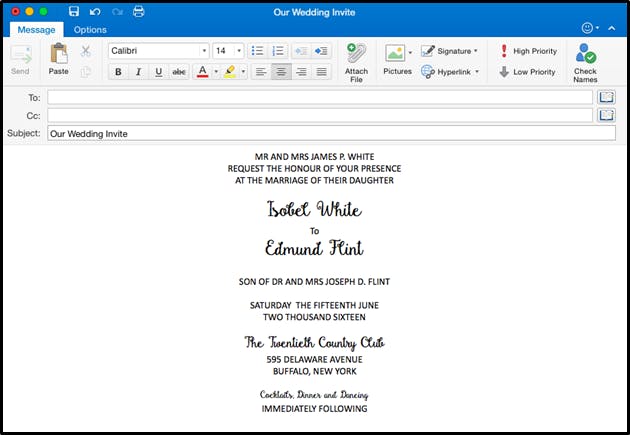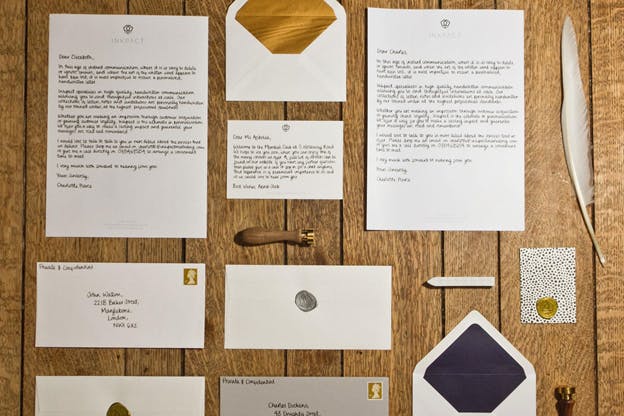The Internet has revolutionized communication. Indeed, conversation has never been easier. Unfortunately, easier doesn’t necessarily mean better.
Nowhere is this disconnect more apparent than in our inboxes. The average businessperson now receives over 90 emails per day, of which less than a quarter are from actual people. All this information is more than any normal person can effectively handle, yet marketers have sent and are continuing to send 12 percent more emails a year since 2012. No wonder “the purge” has become a perfectly acceptable way of managing our messages.
Talk has always been cheap, but on the Internet—it’s virtually worthless. Online, the economics of quantity have almost destroyed the ergonomics of quality. The existence of spam and quasi-requested newsletters won’t come as a surprise to readers of the Daily Dot, but their presence is nonetheless emblematic of how digital is changing mankind’s approach to communication fundamentally.
Talk has always been cheap, but on the Internet—it’s virtually worthless.
Email marketing’s great contribution to the art of conversation is the introduction of “spray and pray” communication. Media people are obsessed with improving their metrics but since 2007, click-to-open rates (the only metric that really matters) have halved. Unfortunately, many digital communicators seem to be incapable of thinking outside of the inbox.
This very digital problem is compounded by our very human nature: Words are only one of the channels through which we communicate. Facial expression, vocal tone, and body language are all necessary for effective self-expression and all conspicuously absent online. There’s an argument to say emoticons provide a kind of substitute, but that’s another story.
What’s more, digital conversations aren’t governed by the same rules of etiquette as normal society. That’s why people type harder than they talk; online and offline consequences are very different. Many people are less inclined to moderate their messaging in the absence of audible boos, visible shock and physical punches.
A recent Derby University study concluded: “Smartphones are psychologically addictive, encourage narcissistic tendencies and should come with a health warning.” This is perhaps a tad dramatic, but it gives academic clout to the idea that online communications—for all their manifold advantages—come with serious baggage.
Right now, all across the globe, companies and individuals are putting aside their keyboards and picking up pens.
But this isn’t an article about the problems of digital communication; this is an article about the joys of analogue conversation. Right now, all across the globe, companies and individuals are putting aside their keyboards and picking up pens. This might seem like a slightly extreme backlash, but there’s more to it than that. Handwritten letters may be old fashioned, but they carry more authenticity and humanity than any other medium. Nowadays, these traits blaze more brightly than ever, casting the inadequacies of digital communication into sharp relief.
The thing is, people simply love receiving handwritten letters. The businesses and individuals who take advantage of this fact really reap the benefits. Take the example of American accessories company HEX. Hex has been sending handwritten thank you letters for years. Apart from the obvious benefits of building loyalty and return custom, the tactic has actually created social magnification, which has almost certainly generated sales.
Designer Mr Bingo gave handwritten postcards an Internet-age makeover by using them for (of course) trolling. Something about his unique brand of artistic abuse struck a chord, because before long, Mr Bingo was being commissioned to send hate mail faster than he could post it. Creativity and humor clearly played a part in these postcards’ popularity, but in our opinion, the physicality and handcraft are what really set them apart.
The old-fashioned civility and creative cruelty of HEX’s thank yous and Mr Bingo’s f**k yous are undeniably endearing, but there’s more than charm at work here. Serious psychology supports the use of handwriting (or handmaking) as a powerful method of communication. Costly signalling theory proposes that actions or objects which appear to have been costly (in terms of time, money or effort) are perceived to have value (in terms of reputation, value or worth).
If that description seems a little abstract, then it’s meant to be; the effects of costly signalling theory are so wide ranging throughout culture and nature that it’s too hard to be any more concise. To put the psychology in context, try this thought experiment:
You receive two wedding invitations.
Both weddings occur on the same date and you like both couples equally.
That’s as far as your knowledge of each event goes (and will go).
Now, based on the nature of the wedding invitations themselves… which of the two events do you reckon will have bottomless free champagne?
People almost always choose the handwritten invite. That’s because the effort visibly put into creating and/or sending a message matters. Greater effort signals greater value. It’s the reason you appreciate long, ranty birthday cards more than Facebook posts. It’s also the reason most people have a shoebox somewhere filled with love letters that their current beau definitely didn’t write. As human beings we find it incredibly difficult to ignore—let alone throw away—something with so much humanity and time invested in it.
Ironically, handwritten letters’ psychological strength—the human effort that’s visibly gone into creating them—is also their physiological weakness. This impracticality is the reason more marketers haven’t picked up a pen. Handwritten letters may have the grasp, but digital communications have the reach. Scalability is the achilles heel of the handwriting hand.
Step in Inkpact. This up-and-coming British startup has developed a business model that they claim enables businesses to send customizable handwritten letters (among other things) with a high degree of scalability. It can sometimes be difficult to separate a startup’s buzz from its sting, but Inkpact’s modus operandi certainly seems to have potential.
Inkpact is building the mainstay of their writer roster from the ranks of stay-at-home parents. This is a canny move. As human resources go, soccer moms and dads are practically innumerable and virtually untapped.
Our ability to have meaningful conversations online is beginning to improve, but a pixel is not a person and it never will be.
More interesting still is the development of an API which can connect seamlessly with CRMs. Theoretically, this could mean telecoms companies’ databases will respond to their many customer service screw ups by automatically commissioning a handwritten apology letter.
What’s more, Inkpact founder and CEO Charlotte Pearce claims her handwritten letters achieve an 100 percent open rate. The math seems unlikely until you ask yourself the question: “When have you ever received a handwritten letter and not opened it?”
Will the future be filled with insincere apology letters from cynical insurance companies handwritten by bored housewives? It’s an amusingly horrid idea; Douglas Adams would have approved. Fortunately, we think it’s extremely unlikely.
While Inkpact may well make good on a business model which enables genuinely scalable handwritten marketing (for what it’s worth, we think they will), their prices (starting at about £7.00 per letter, or about $10 each) mean our letterboxes should be safe.
Our ability to have meaningful conversations online is beginning to improve—given enough time it will surely change fundamentally—but a pixel is not a person and it never will be. This distinction matters because humans like humans, and nothing oozes humanity and personality quite like a handwritten letter. Who can say what the future of communications will be? All we know for sure, is that handwritten letters aren’t going away anytime soon.
Ran Stallard is an art director at Ogilvy & Mather in London. Ran studied advertising at the School of Communication Arts 2.0, where she fell in love with the power of a good idea. She just finished illustrating a children’s bedtime alphabet book, Toodle-oo Zoo, and was one of 20 artists invited by the BBC to paint the Queen’s Jubilee River Pageant.
Max Maclean is a junior copywriter at Ogilvy & Mather in London. Max attended Edinburgh University, where he spent four years managing an award-winning student radio station. He also attended the the School of Communication Arts 2.0, where he met Ran Stallard and the two became the creative team, Ran & Max. Follow them on Twitter @RanAndMax.

